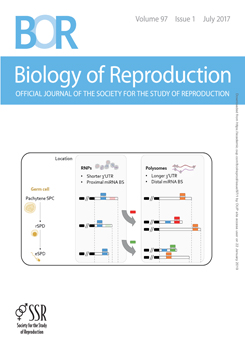Embryonic diapause is a common reproductive strategy amongst mammals, requiring an intimate cross-talk between the endometrium and the blastocyst. To date, the precise molecular signals responsible are unknown in the mouse or any othermammal. Previous studies in the mink implicate polyamines as major regulators of the control of diapause. In the mouse, inhibiting the ratelimiting enzyme of polyamine synthesis, ornithine decarboxylase (ODC1) during early pregnancy largely prevents implantation, but the fate of the nonimplanted embryos is unknown. To determine whether polyamines control mouse embryonic diapause, we treated pregnant mice with an ODC1 inhibitor from d3.5 to d6.5 postcoitum. At d7.5, 72% of females had no signs of implantation whilst the remaining females exhibited disrupted placental formation and degenerate embryos. In the females with no implantation, we obtained viable blastocysts that had attenuated cell proliferation, indicating a state of diapause. When cultured in vitro, these exhibited trophoblast outgrowth, indicative of reactivation of embryogenesis. In contrast, direct culture of d3.5 blastocysts with an ODC1 inhibitor failed to cause entry into diapause. Examination of the polyamine pathway enzymes and a number of implantation factors indicated inhibition of ODC1 resulted in a uterine phenotype that resembled diapause, with some compensatory increases in crucial genes. Thus, we conclude that an absence or paucity of polyamines induces the uterine quiescence that causes entry of the blastocyst into embryonic diapause.
Summary Sentence
Mouse blastocysts require polyamines to reactivate from embryonic diapause and for subsequent development.





